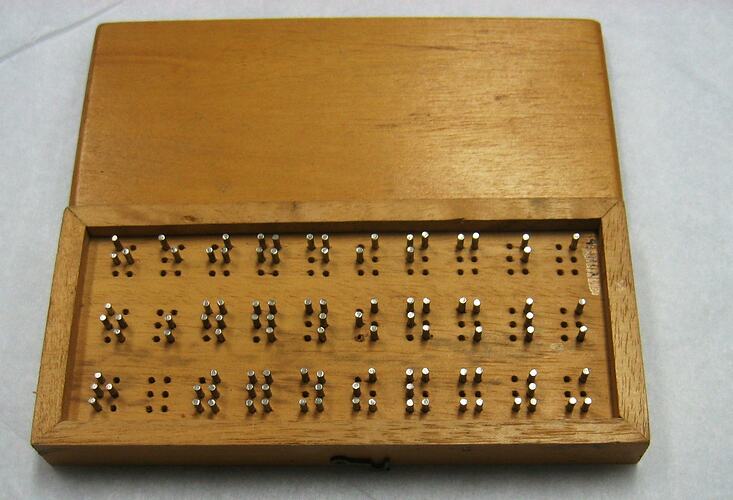Summary
Wooden braillette board with metal pins, circa 1920s-1960s. The braillette board is a simple device used for the teaching of braille, particularly to beginners since the large format cell (and dots) help with character recognition. It was often used teach visually impaired adults, whose sense of touch was undeveloped, the fundamentals of the Braille characters. Metal pins are placed in a wooden board to provide a clear idea of the shape of each character.
Physical Description
Small wooden box, made of blond wood, with metal latch and hinges. Inside the box are three rows of holes representing braille letters, made with silver metal pins. Each row has 10 sets of 6 holes with the pins placed in the appropriate holes to represent letters.
More Information
-
Collection Names
-
Collecting Areas
-
Acquisition Information
Donation from Royal Victorian Institute for the Blind (RVIB), 21 Jul 1993
-
Place Used
Royal Victorian Institute for the Blind (RVIB), Prahran, Greater Melbourne, Victoria, Australia, circa 1920s-1960s
-
Classification
Medicine & health, Health organisations, Special needs equipment
-
Category
-
Discipline
-
Type of item
-
overall dimensions
21 cm (Length), 9.5 cm (Width), 3 cm (Height)
-
Maximum dimensions
212 mm (Length), 99 mm (Width), 32 mm (Height)
Measurement From Conservation. Dimensions takenw ith lid closed
-
Dimensions
215 mm (Length), 95 mm (Width), 30 mm (Height)
Measurement From Conservation.
-
Keywords
